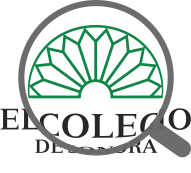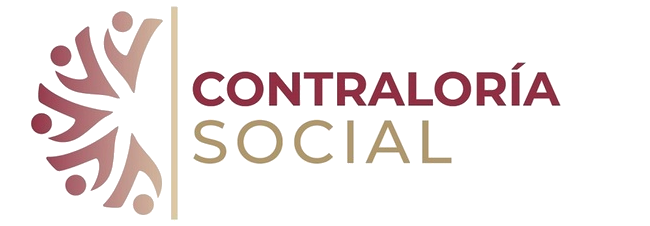| dc.contributor.author | Aguilar Rivera, Noé | |
| dc.contributor.author | Galindo Mendoza, Guadalupe | |
| dc.contributor.author | Fortanelli Martínez, Javier | |
| dc.contributor.author | Contreras Servín, Carlos | |
| dc.coverage.spatial | MX-SON | en-US |
| dc.creator | AGUILAR RIVERA, NOE; 205770 | |
| dc.creator | GALINDO MENDOZA, MARIA GUADALUPE; 121199 | |
| dc.creator | Fortanelli Martínez, Javier; 215518 | |
| dc.creator | CONTRERAS SERVIN, CARLOS; 121584 | |
| dc.date | 2011-09-01 | |
| dc.date.accessioned | 2022-06-28T19:42:34Z | |
| dc.date.available | 2022-06-28T19:42:34Z | |
| dc.date.issued | 2011-09-01 | |
| dc.identifier | https://regionysociedad.colson.edu.mx:8086/index.php/rys/article/view/188 | |
| dc.identifier | https://doi.org/10.22198/rys.2011.52.a188 | |
| dc.identifier.uri | https://regionysociedad.colson.edu.mx:8086/index.php/rys/article/view/188 | |
| dc.identifier.uri | https://doi.org/10.22198/rys.2011.52.a188 | |
| dc.identifier.uri | https://repositorio.colson.edu.mx/handle/2012/45596 | |
| dc.description.abstract | The Mexican sugar industry has a long history. It is an industry which combines the agricultural activities of growing, harvesting and transporting sugarcane with the industrial factory production of raw and refined sugar and many specialty and downstream products. To compete in a global economy, it is important to establish performance criteria/benchmarks for the purpose of achieving lowestcost sugar production in terms of technical competitiveness, productivity and efficiency according to three aspects (sucrose yields, sugarcane per hectare and factory). This article discusses some economic and technical competitiveness indicators for the performance assessment of the Mexican sugarcane industry, using various tools (benchmarking and Porter's diamond methodologies) for analyzing performance parameters. The results suggest that there are numerous technical and economic factors that limit growth, since the Mexican industry has remained highly non-competitive and needs to improve and innovate in reducing costs, particularly regarding sugarcane farming business performance (raw material, harvest and transport costs), and the development of planning strategies to improve profitability. The other major area identified is sugar process diversification based on by-products (waste, chaff, molasses, filter mud and stillage). This is highly relevant to the sugar industry as a source of renewable energy and raw materials. | en-US |
| dc.description.abstract | La industria azucarera de México integra actividades agrícolas de crecimiento, cosecha y transporte de caña a la producción de azúcar estándar y refinada, con otros productos y subproductos. Para competir en una economía global, es importante establecer criterios de desempeño para reducir costos de producción en términos de competitividad técnica, productividad y eficiencia en aspectos como rendimientos, caña de azúcar y agroindustrial por hectárea y de fábrica. En este artículo se discuten algunos indicadores de competitividad económica y técnica de la industria de caña de azúcar mexicana, con metodologías de benchmarking y diamante de Porter. Los resultados mostraron que son numerosos los factores técnicos y económicos que limitan el crecimiento, debido a que la industria mexicana se ha mantenido no competitiva y requiere mejorar e innovar en la reducción de costos, sobre todo en materia prima, cosecha y transporte. También está la diversificación, con base en los subproductos, como residuos de cosecha, bagazo, melazas, lodo de filtros y vinazas; esto es de gran importancia como fuente renovable de energía y materias primas. | es-ES |
| dc.format | application/pdf | |
| dc.language.iso | spa | |
| dc.publisher | El Colegio de Sonora | es-ES |
| dc.relation | https://regionysociedad.colson.edu.mx:8086/index.php/rys/article/view/188/388 | |
| dc.rights | Derechos de autor 2017 Noé Aguilar Rivera, Guadalupe Galindo Mendoza, Javier Fortanelli Martínez, Carlos Contreras Servín | es-ES |
| dc.rights | https://creativecommons.org/licenses/by-nc/4.0/ | es-ES |
| dc.rights | info:eu-repo/semantics/openAccess | es-ES |
| dc.source | 2448-4849 | |
| dc.source | 1870-3925 | |
| dc.source | región y sociedad; Vol. 23 No. 52 (2011): September-December | en-US |
| dc.source | región y sociedad; Vol. 23 Núm. 52 (2011): septiembre-diciembre | es-ES |
| dc.subject | Sugar industry | en-US |
| dc.subject | Productivity | en-US |
| dc.subject | Sugarcane | en-US |
| dc.subject | Costs | en-US |
| dc.subject | Agroindustria azucarera | es-ES |
| dc.subject | Productividad | es-ES |
| dc.subject | Costos | es-ES |
| dc.subject | Caña de azúcar | es-ES |
| dc.subject | Ciencias Sociales | |
| dc.subject.lcsh | Sugar industry | en-US |
| dc.subject.lcsh | Productivity | en-US |
| dc.subject.lcsh | Sugarcane | en-US |
| dc.subject.lcsh | Costs | en-US |
| dc.subject.lcsh | Agroindustria azucarera | es-ES |
| dc.subject.lcsh | Productividad | es-ES |
| dc.subject.lcsh | Costos | es-ES |
| dc.subject.lcsh | Caña de azúcar | es-ES |
| dc.title | Factores de competitividad de la agroindustria de la caña de azúcar en México | es-ES |
| dc.type | info:eu-repo/semantics/article | |
| dc.type | info:eu-repo/semantics/publishedVersion | |
| dc.audience | generalPublic | |
| dc.identificator | 5 | |










